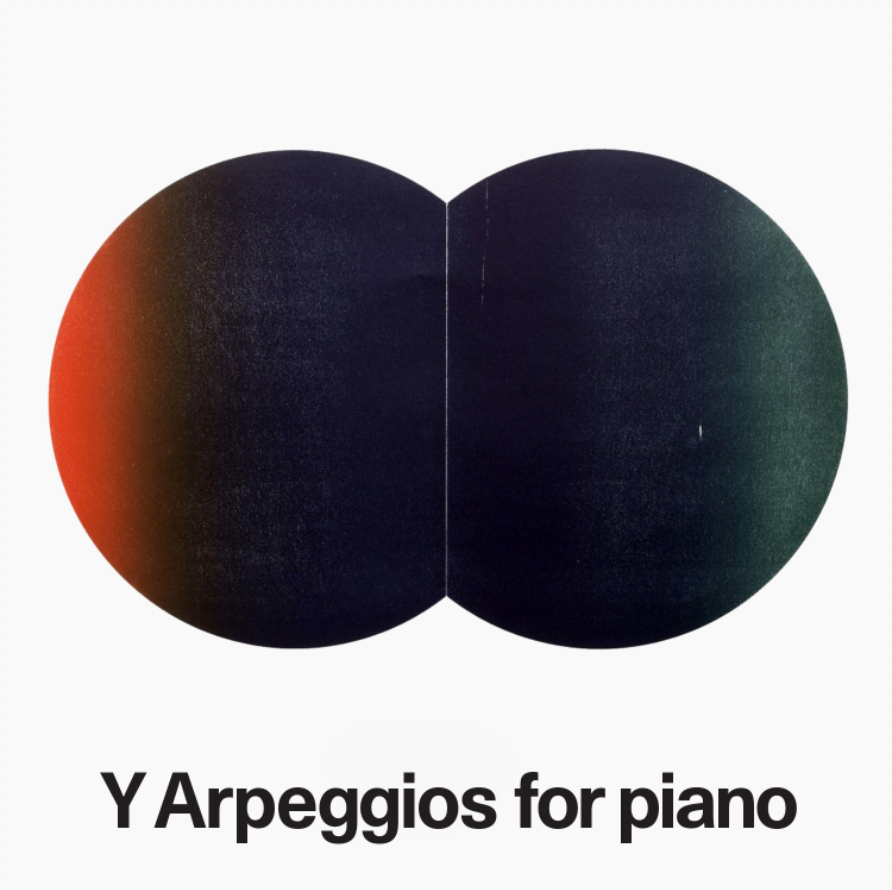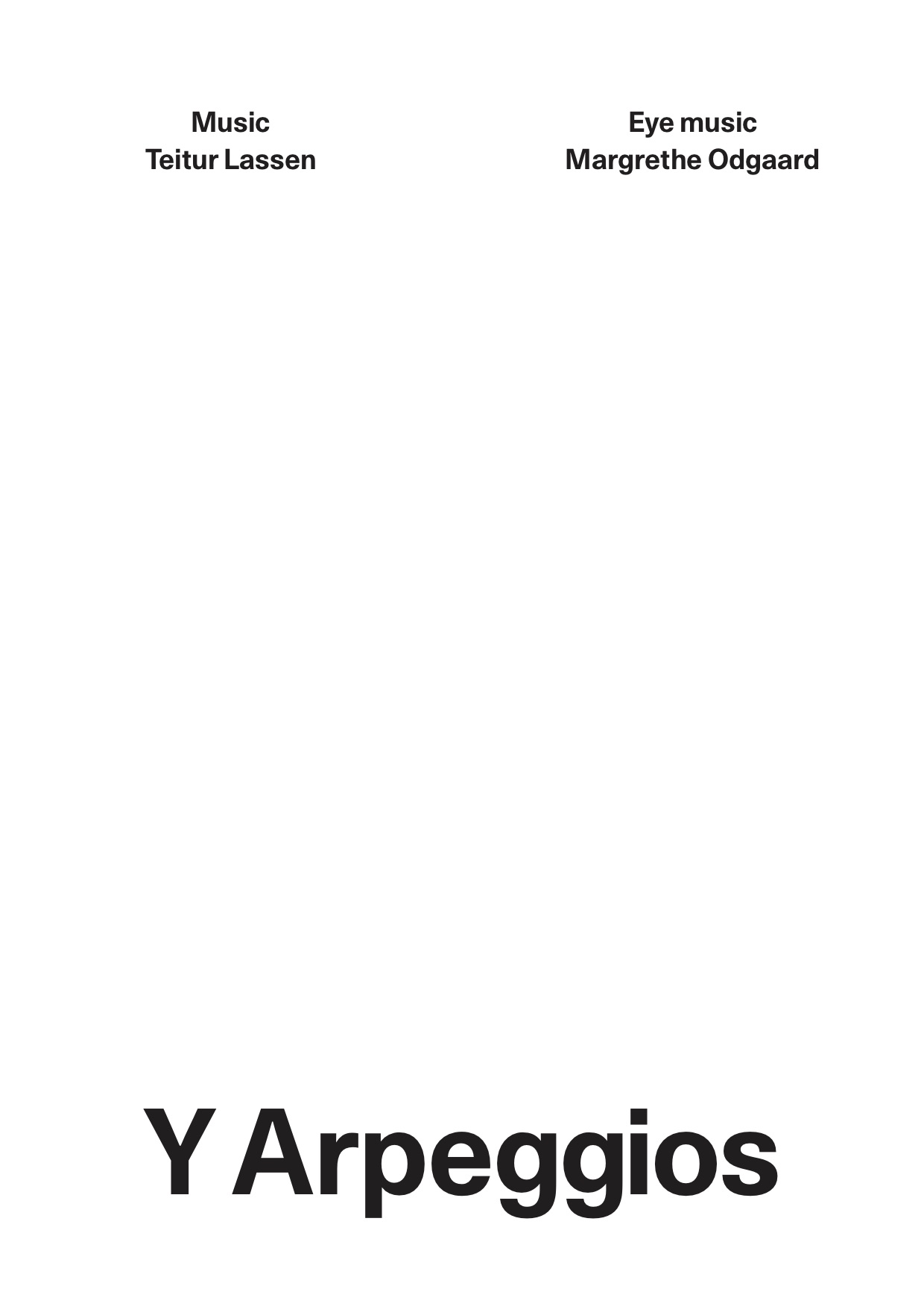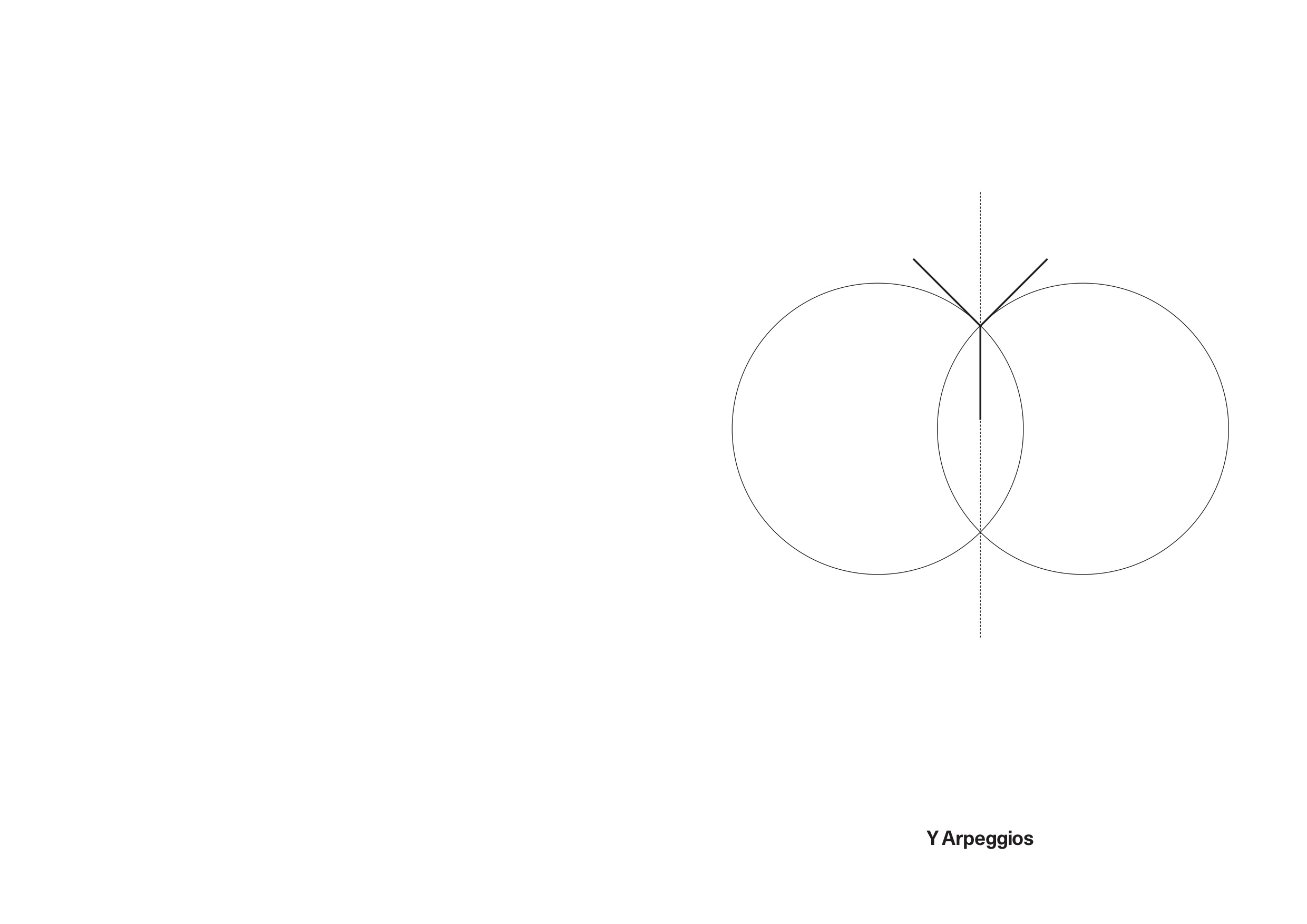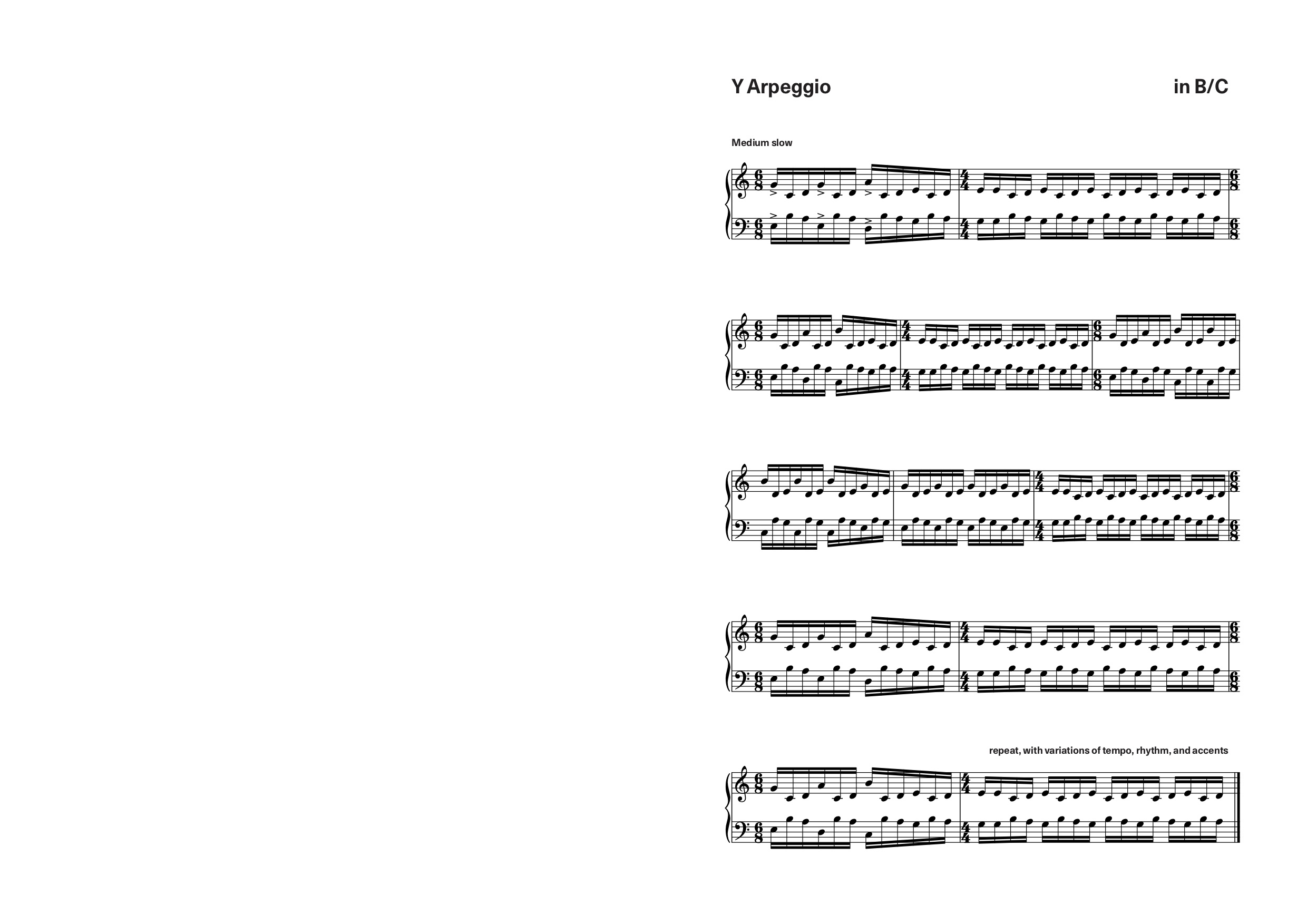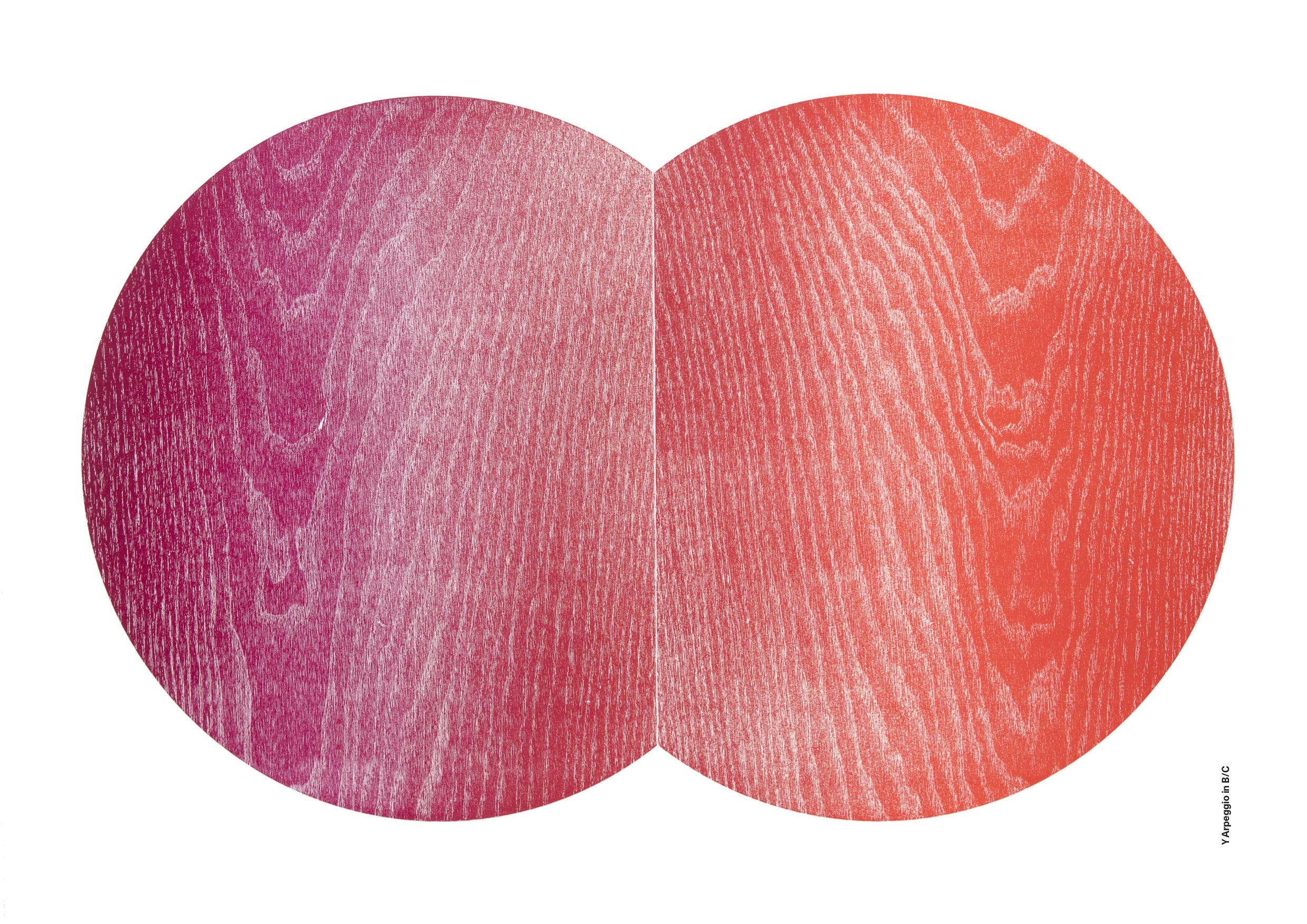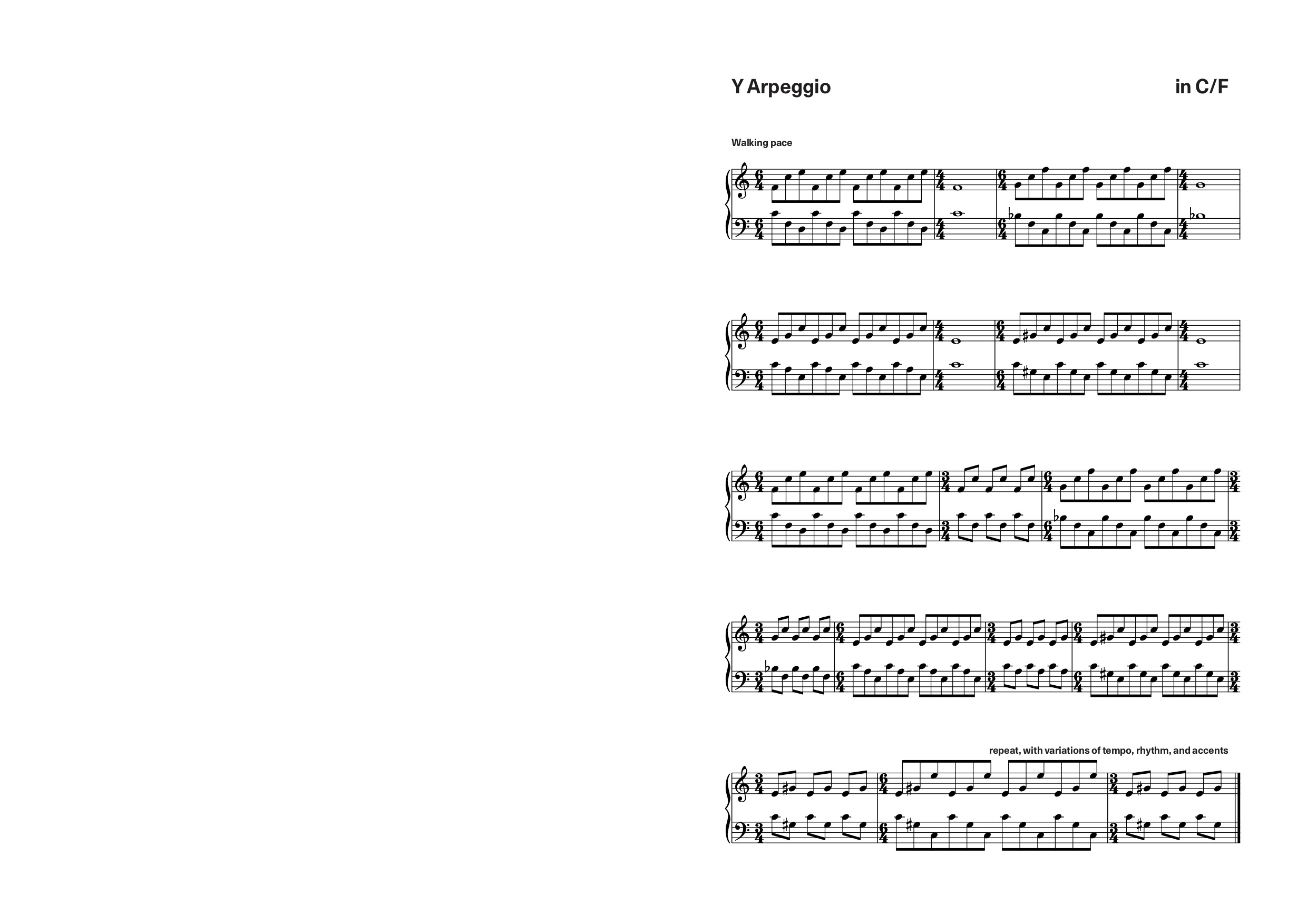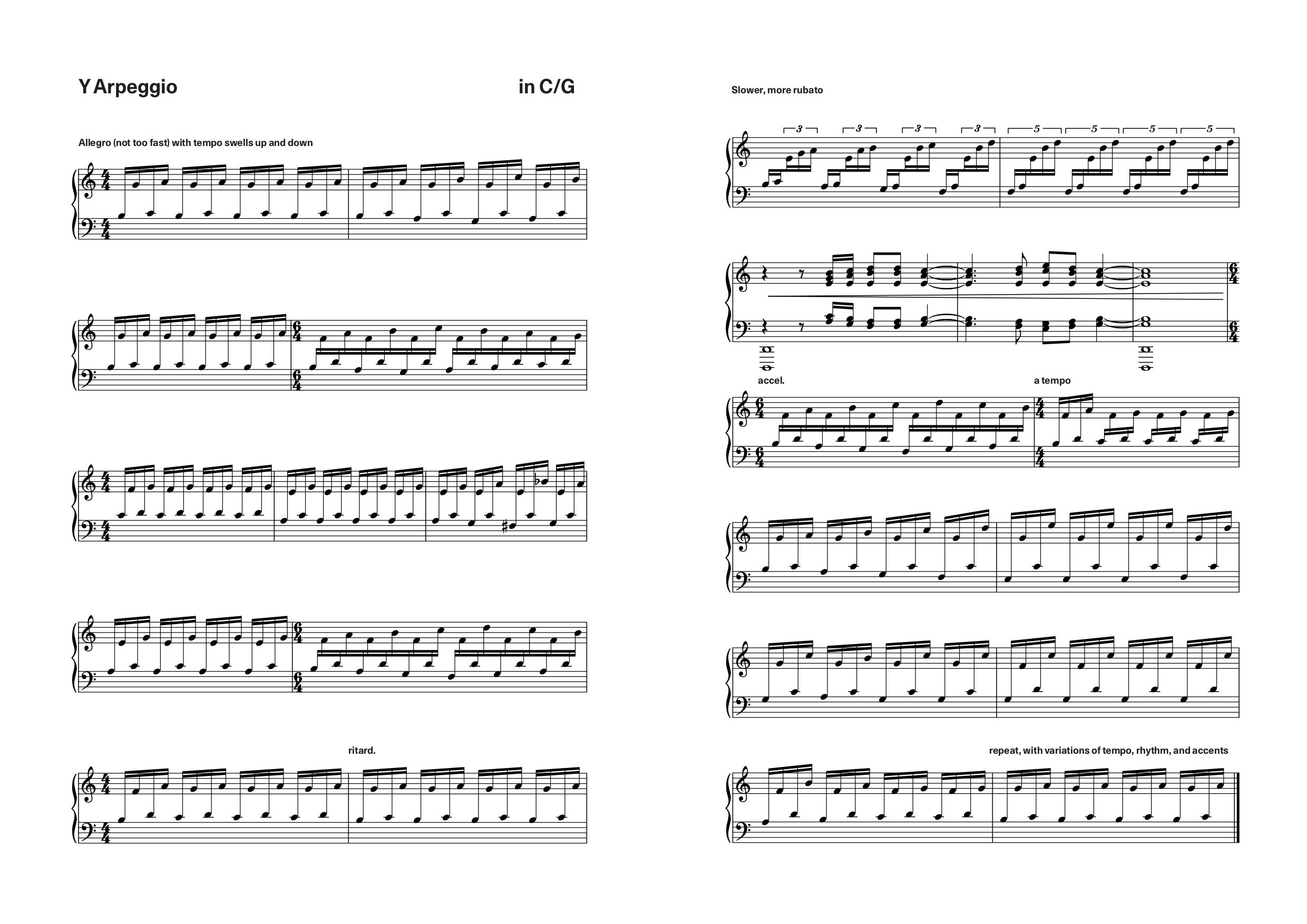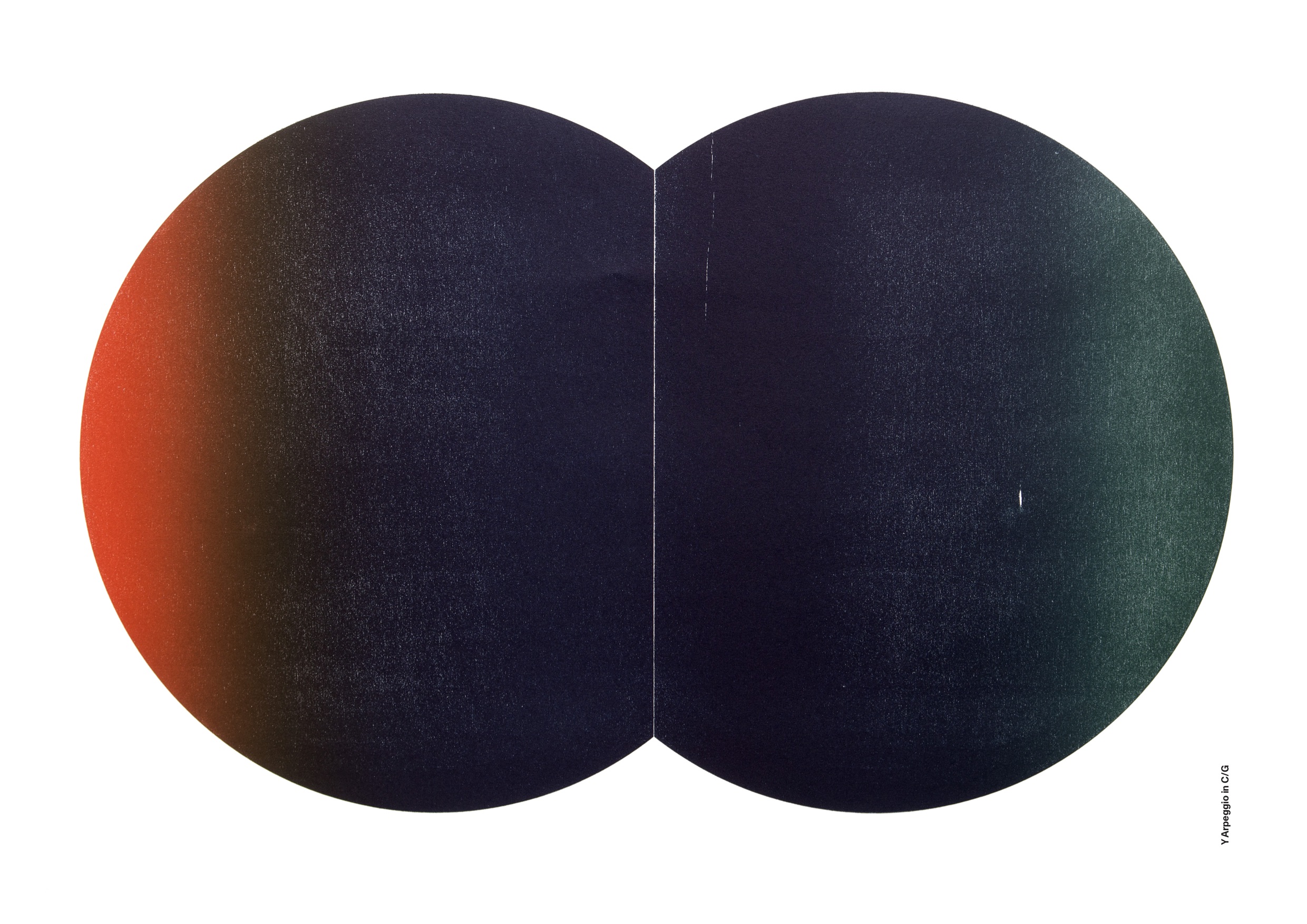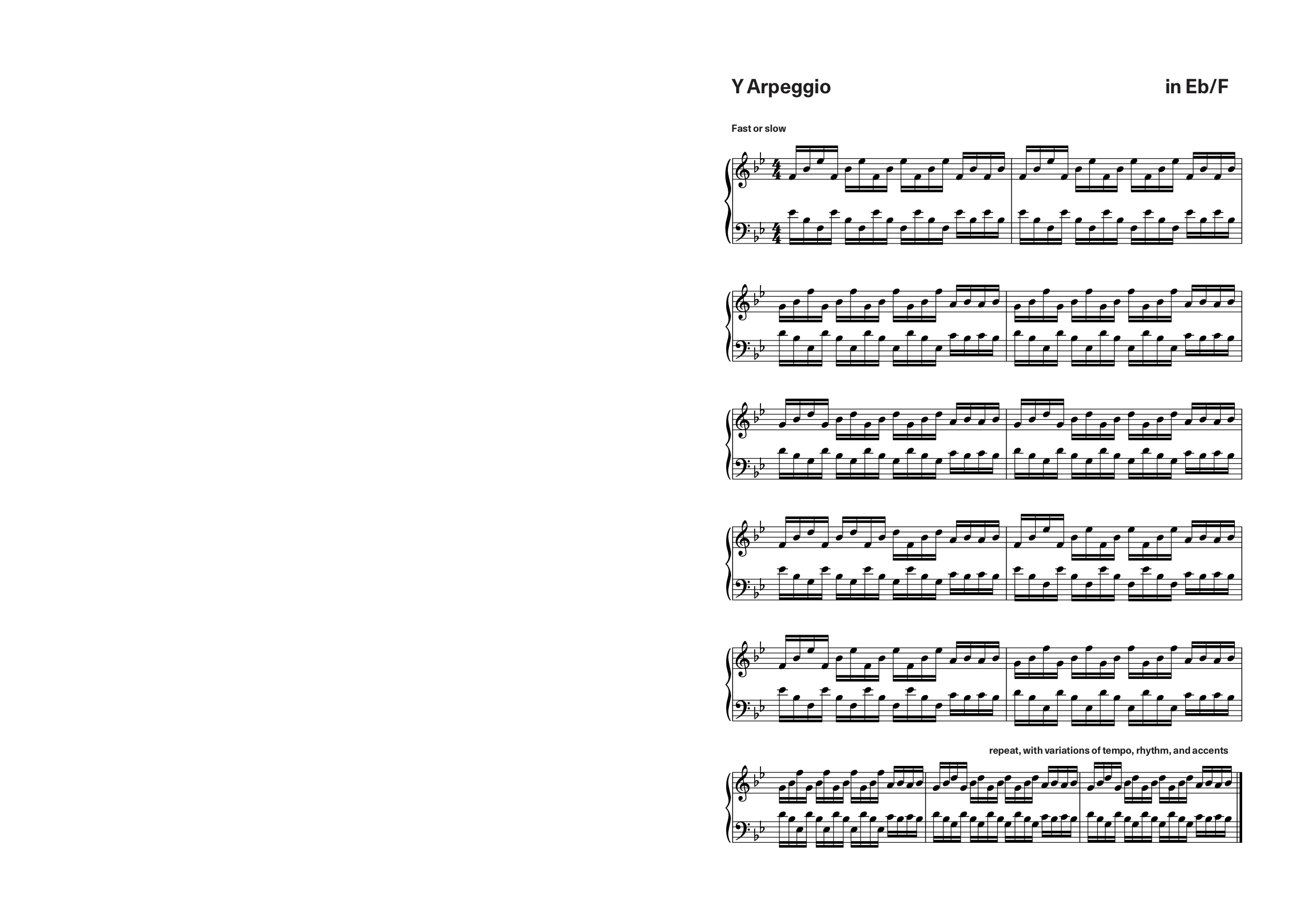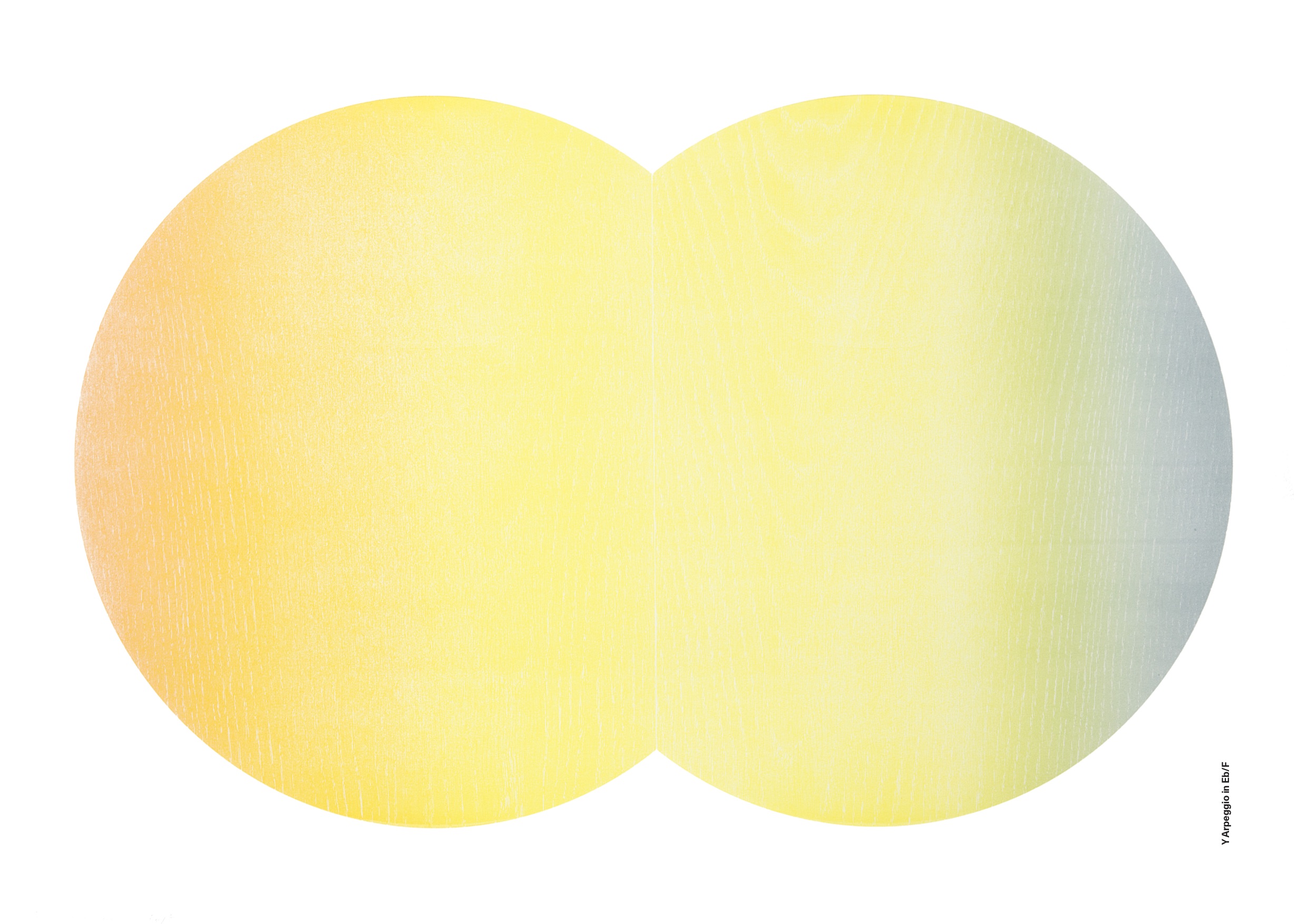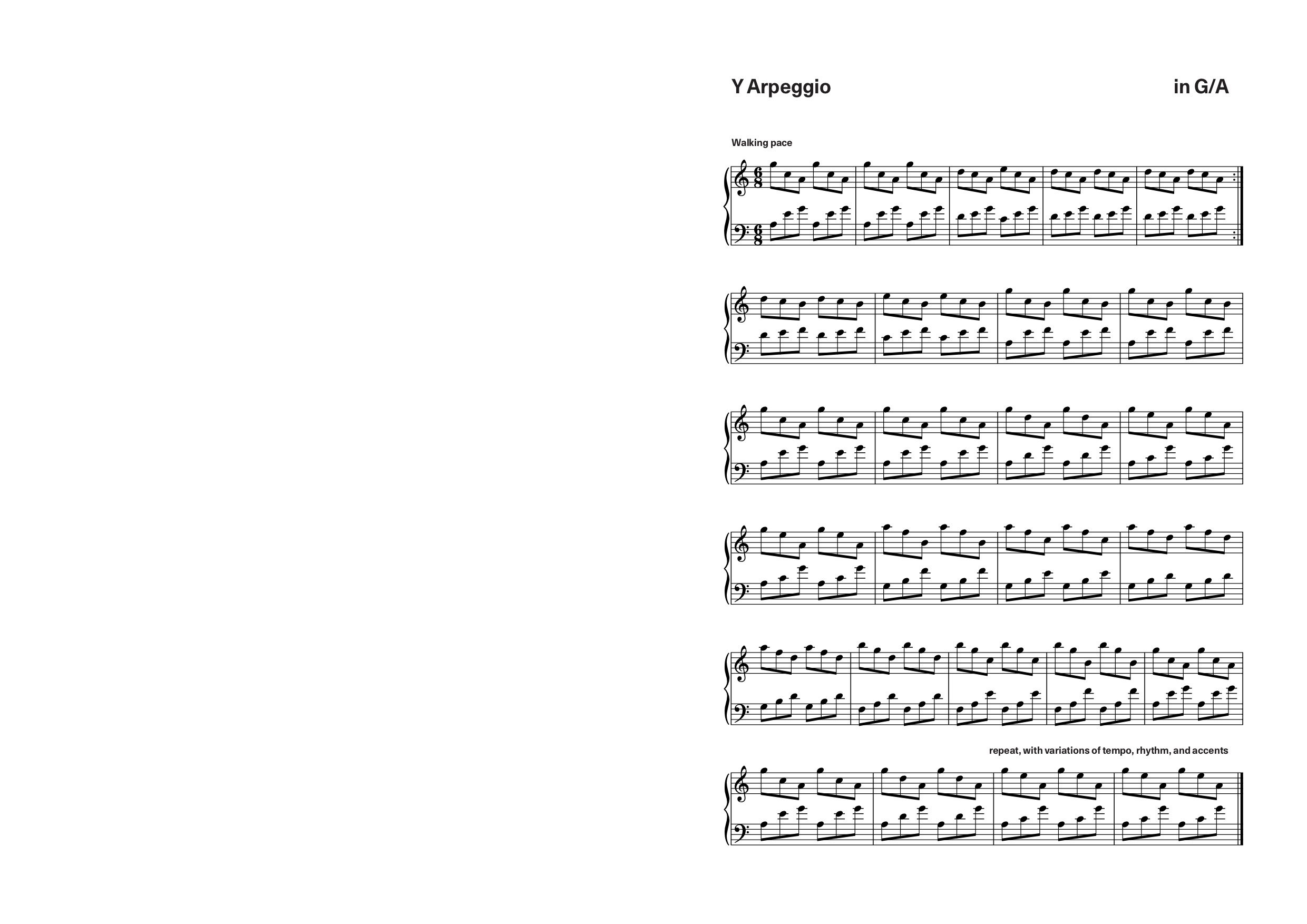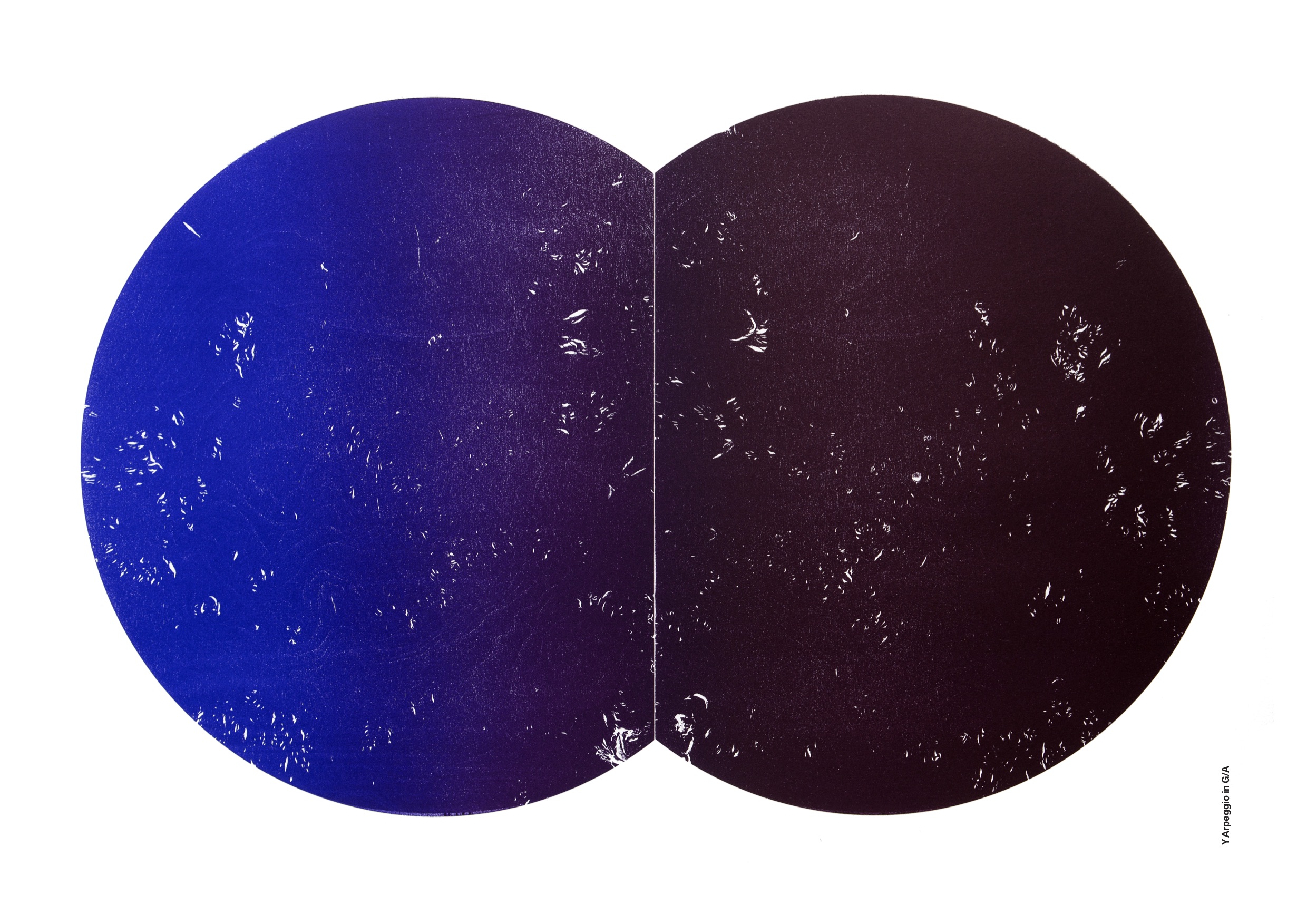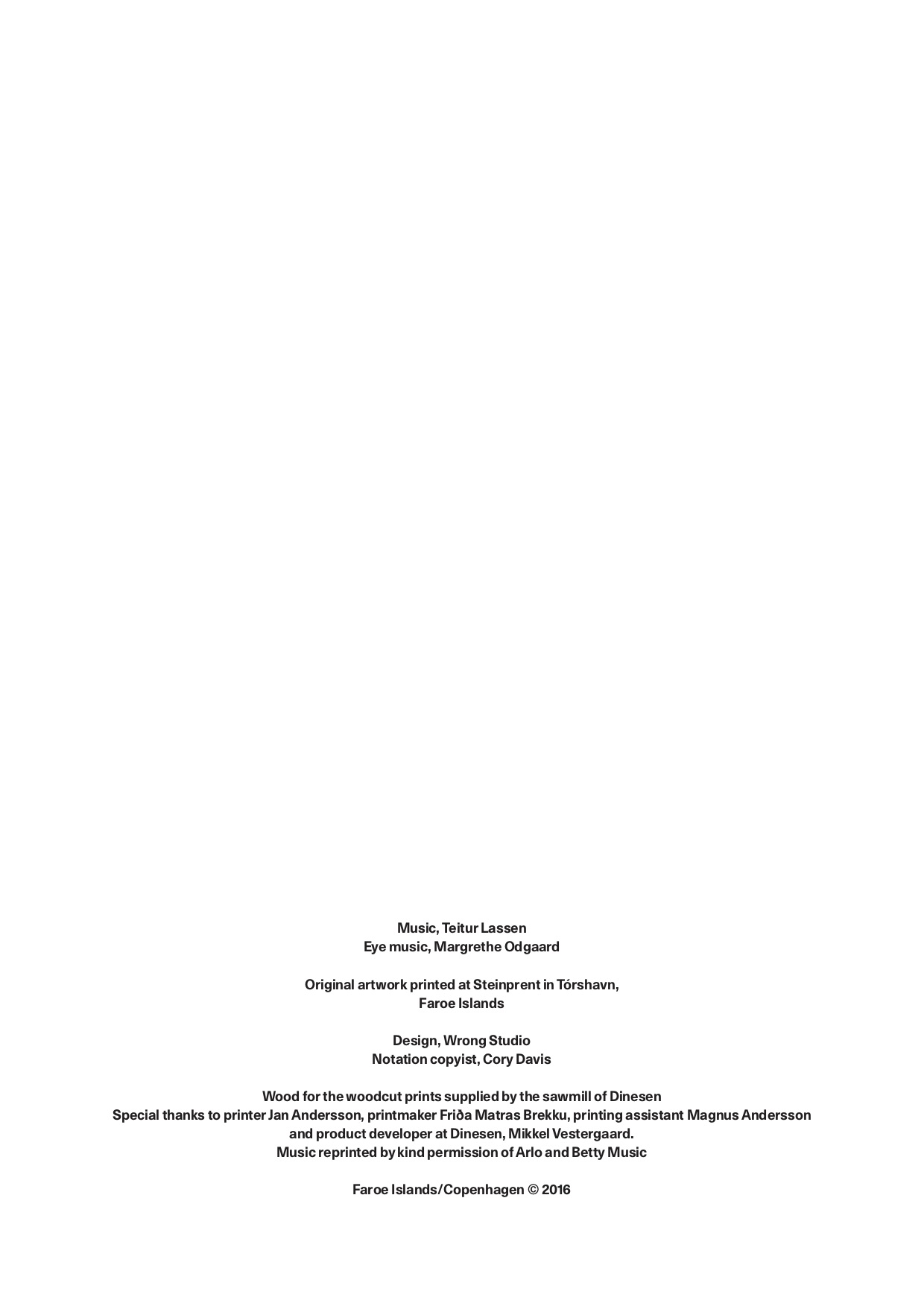Y Arpeggios for piano, 2017
MO YAR 17
‘Y Arpeggios for piano’ is a five track EP with piano instrumentals composed and performed by Faroese composer Teitur Lassen. It was released by Ferryhouse Productions in 2017 and accompanied by 5 woodprints by Margrethe Odgaard conceived as eye-music and printed at Steinprent, Faroe Islands. Consequently, the collaboration was made into a notebook printed in a limited edition of 20.
Y Arpeggios is based on the idea that you play mirrored patterns in the shape of a Y instead of traditional chords and harmonies. Arpeggiare is Italian and means to play on a harp. It refers to notes played in a sequence rather than ringing out simultaneously. Instead of playing in one key, Y Arpeggios uses two keys, for example C and F. The two root notes mirror each other; when one goes up, the other goes down and vice versa. Imagine your thumbs are the vertical line at the bottom of a Y and your remaining four fingers on each hand are playing the lines in mirrored contrary motion.
Eye music is a term for graphical notation of music dating back to the early Renaissance. It is unnoticeable by the listener when performed. The double circle of the woodcut print is an image of the two keys melting into one figure and of your two hands moving simultaneously in a mirrored pattern. Referring to studies of the connection between colours and sound, especially those of Isaac Newton from 1704, each colour appoints to a certain note like C as the colour red, D as the colour orange and so on. As patterns solid ash, Douglas, beech, oak, and elm tree have been used for their different grain.
Teitur Lassen and Margrethe Odgaard
